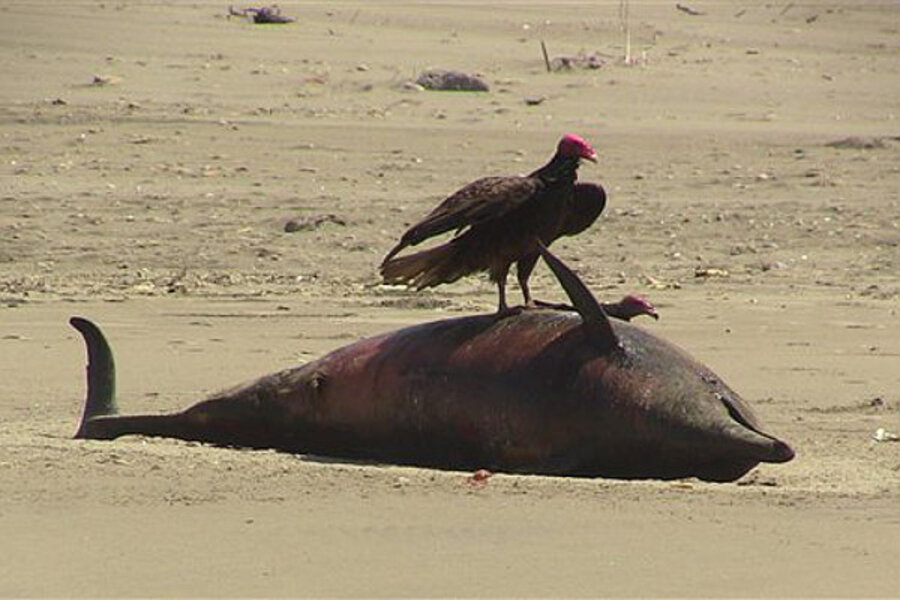Dead dolphins: Peru's beaches littered with hundreds of dead dolphins – again
Loading...
| LIMA, Peru
More than 400 dead dolphins were found last month on the Pacific Ocean beaches of northern Peru where twice that number were found in 2012, officials said Monday.
Authorities never established the cause of the deaths in 2012. They are doing autopsies on the latest dolphins, found during January in the Lambayeque region on the northern coast.
Technician Jaime de la Cruz of Peru's IMARPE marine life agency said about 220 dead dolphins were found in the last week of January, the rest during the previous three weeks.
De la Cruz said autopsy results are expected in two weeks. Exams will focus on lungs, kidneys, and livers.
Autopsies of some of the more than 870 dolphins found in 2012 were inconclusive. Speculation ranged from biotoxins in the sea to seismic testing to an unknown ailment.
Yuri Hooker, director of the marine biology unit at Cayetano Heredia University, told The Associated Press that in other parts of the world dolphin deaths generally are caused by environmental contamination. Either the sea mammals eat fish and other smaller species filled with toxins or else they ingest discarded plastic floating in the sea.
The marine biologist said determining the death of dolphins is "complicated" in Peru because government laboratories have only three or four of the 100 or so chemical reagents that can be used to determine the animals' cause of death.
Copyright 2014 The Associated Press. All rights reserved. This material may not be published, broadcast, rewritten or redistributed







